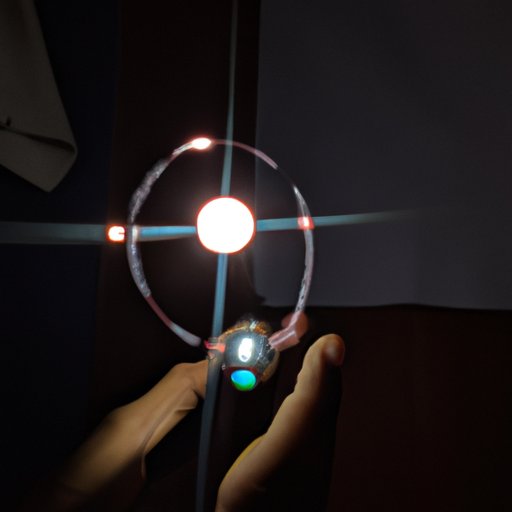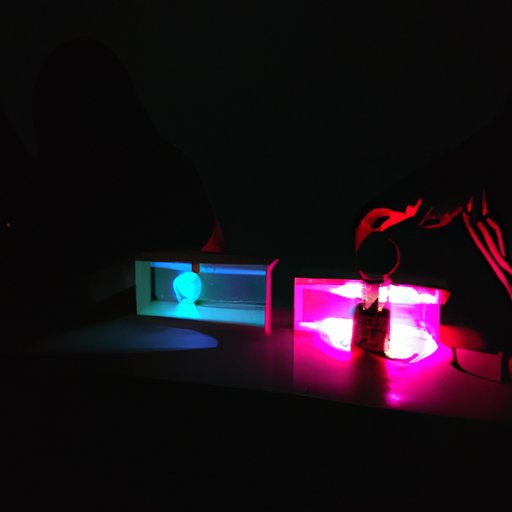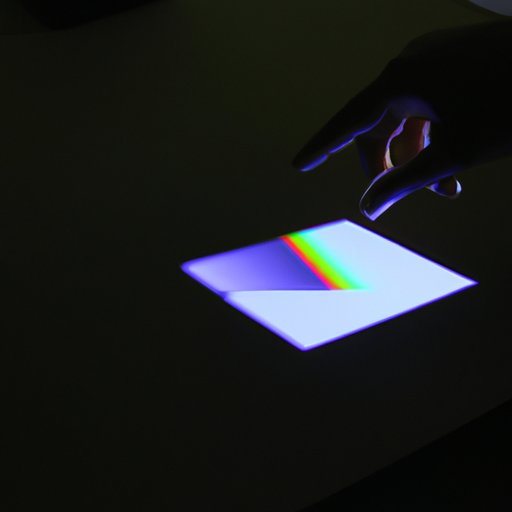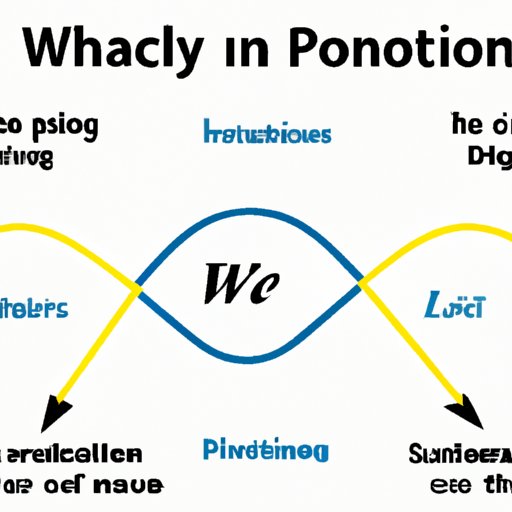Introduction
Light is an essential part of our lives and understanding how it works can help us make better use of it. Light is a form of energy that travels in waves and can be seen by the human eye. It is made up of particles called photons, which are packets of energy that move at the speed of light.
In this article, we will explore how light works and its various applications. We will look at the science behind light, investigate different sources and their functions, analyze the different properties of light, examine the interaction between light and matter, and discuss the uses and benefits of light.

Explaining the Science Behind How Light Works
The two main theories that explain how light works are the wave theory and the photon theory. The wave theory states that light is composed of waves that travel through space in the form of electromagnetic radiation. On the other hand, the photon theory explains that light consists of particles, or photons, that move at the speed of light.
It is important to note that light and electromagnetic radiation are not the same. Electromagnetic radiation includes visible light, but also other forms of radiation such as radio waves, infrared radiation, ultraviolet radiation, and x-rays. These other forms of radiation are invisible to the human eye, while visible light is visible to the human eye.

Investigating Different Sources of Light and Their Functions
Light can come from both natural and artificial sources. Natural sources of light include the sun, stars, and fire. Artificial sources of light include electric lights, such as incandescent bulbs, fluorescent bulbs, and LED bulbs. Color temperature and brightness are two factors that affect the output of light from these sources.
Color temperature is measured in degrees Kelvin (K) and indicates the hue of the light. For example, a color temperature of 3000 K is considered warm white and is similar to the color of a traditional incandescent bulb. A color temperature of 5000 K is considered cool white and is similar to the color of a fluorescent bulb.
Brightness is measured in lumens and indicates the intensity of the light. The higher the lumens, the brighter the light. For example, a 100 watt incandescent bulb typically produces about 1400 lumens.

Analyzing the Different Properties of Light
Light has several properties that can be used to describe its behavior. Reflection is when light bounces off of a surface and returns in the same direction. Refraction is when light changes direction as it passes through a medium, such as water or glass. Diffraction is when light spreads out after passing through a narrow opening. And interference is when two waves overlap and create a pattern.
Examining the Interaction Between Light and Matter
The interaction between light and matter can be divided into three categories: absorption, emission, and scattering. Absorption occurs when light is absorbed by a material and converted into heat. Emission occurs when a material emits light, such as when a hot object glows. Scattering occurs when light is reflected off of a material in a random direction.
Discussing the Uses and Benefits of Light
Light has many practical uses and benefits. One of the most common uses of light is for lighting, which can be used to illuminate our homes and workplaces. Light is also used in communications, such as for optical fibers that carry data. And light can also have positive effects on our health and wellbeing, such as helping to regulate our body’s internal clock.
Conclusion
In conclusion, light is an essential part of our lives and understanding how it works can help us make better use of it. We have explored the science behind how light works, investigated different sources and their functions, analyzed the different properties of light, examined the interaction between light and matter, and discussed the uses and benefits of light.
Some key points to remember are that light is composed of waves or particles, depending on the theory, and that it can come from natural or artificial sources. Additionally, light has several properties, such as reflection, refraction, diffraction, and interference. Finally, light has many practical uses and benefits, such as lighting, communications, and health and wellbeing.
(Note: Is this article not meeting your expectations? Do you have knowledge or insights to share? Unlock new opportunities and expand your reach by joining our authors team. Click Registration to join us and share your expertise with our readers.)
